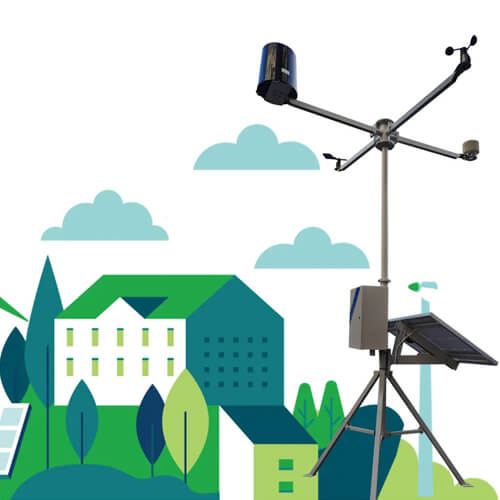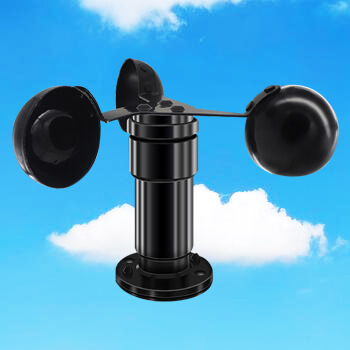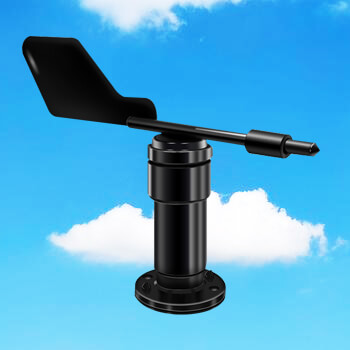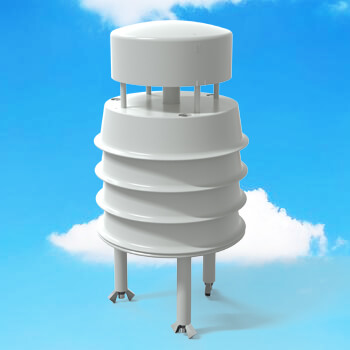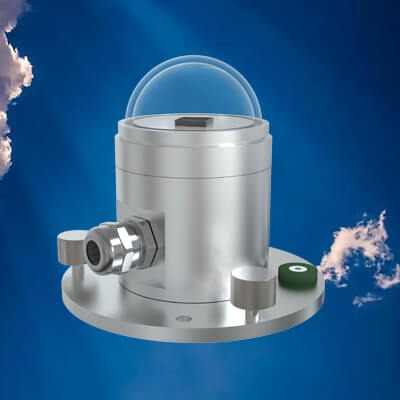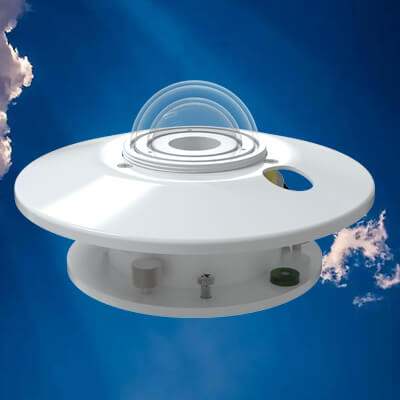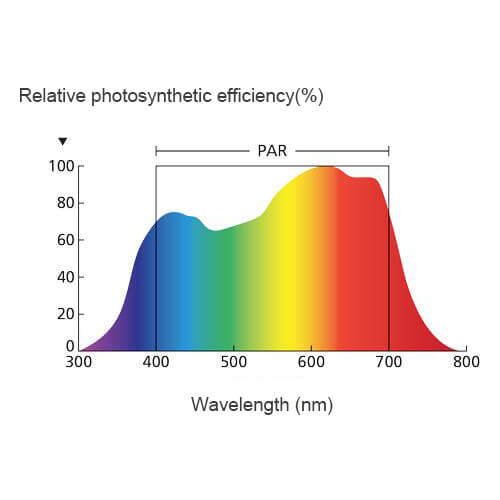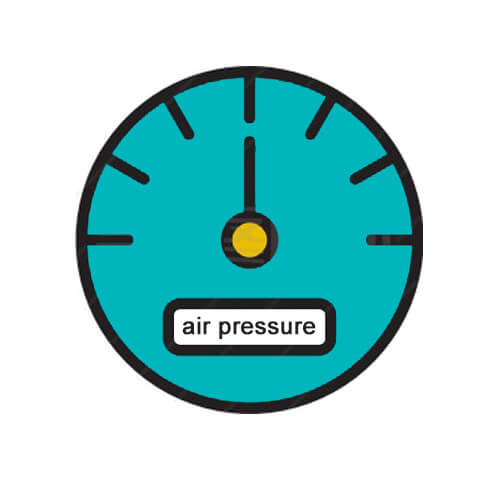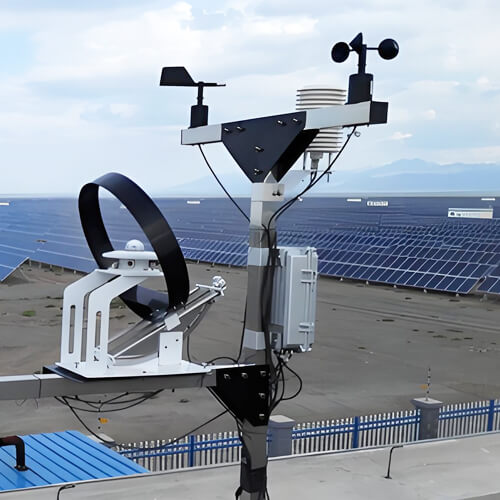What are meteorological sensors?
Meteorological sensors are specialized equipment for understanding and measuring climate change. These sensors are often mounted in combination on fixed poles or near shore to record average lake conditions. There are many important factors affecting meteorological changes, such as temperature, humidity, wind speed and direction, rainfall, radiation and so on. These meteorological sensors use different principles to reflect weather fluctuations by converting internal voltage changes into electrical signals. These meteorological sensors can detect weather conditions in local areas, automatically collect meteorological information, and provide meteorologists with accurate meteorological information in a timely manner.
What do meteorological sensors measure?
In order to monitor meteorological changes more accurately, it is often necessary to measure a variety of meteorological elements. Meteorological parameters that typically need to be measured include:
- Temperature and humidity
- Wind speed and direction
- Sun radiation
- Rainfall and Evaporation
- Atmospheric visibility
- Illumination
- Atmospheric pressure
In addition to this, there are some other meteorological-related characteristics, such as carbon dioxide, pm concentration, soil temperature and humidity, etc. Information on these parameters can be found in the product list on this website.
8 types of meteorological sensors
1. Wind speed and direction sensor
Wind speed and direction are important parameters for meteorological monitoring. Therefore, wind speed and wind direction sensors are the most important types of meteorological sensors. From a scientific point of view, the movement of air can be divided into two parts, vertical and horizontal. The vertical part is called the vertical motion of the air (eg, convective motion). Wind is the horizontal movement of air, it is a vector. The movement of the wind has both speed and direction. Therefore, the observation of wind includes wind direction and wind speed. In order to obtain a certain representative wind speed and direction data during observation, the average wind speed and the maximum wind direction in a certain period of time are generally taken.
In meteorological research, it is usually necessary to observe many kinds of natural phenomena, such as changes in wind speed and weather, and of course, changes in wind direction. For the measurement of wind direction, wind direction meters or wind direction sensors are basically used to solve this problem. Including environmental monitoring and control of ports and wharves, monitoring and control of weather stations and environmental protection, monitoring and control of construction machinery operation processes, monitoring and control of high-altitude operations, and monitoring and control of other industrial processes related to wind speed and direction safety and other fields.
At present, the commonly used wind speed and direction sensors in meteorology can be divided into three categories:
- Propeller-type wind direction and wind speed sensor. The propeller-type wind sensor has poor accuracy and average dynamic performance.
- Three-cup wind speed and wing wind direction sensor. The three-cup sensor operation is more suitable. The measurement of outdoor wind speed and direction is the most used sensor. The sensing element of the wind speed sensor is a three-cup type revolving frame, and the signal conversion circuit is a Hall switch circuit. Under the action of horizontal wind, the wind cup group rotates, and the main sleeve drives the magnetic rod disk to rotate.
- Ultrasonic wind speed and direction sensor. The ultrasonic wind speed and direction sensor mainly uses the ultrasonic time difference method to realize the measurement of wind speed and direction. It is an all-in-one wind speed and direction sensor, with no extra accessories, and the overall structure is fixed. Therefore, it is often used in fields such as aerospace and navigation.
2. Temperature and humidity sensor
Humidity and temperature are inseparable factors that affect meteorological changes. The temperature usually observed in meteorology is the air temperature. Humidity generally measures relative humidity. Different weather systems often cause changes in temperature in a certain area. Usually cold air brings cooling, warm air brings heating, and strong winds and precipitation correspond to cooling. Changes in the measured temperature can reflect changes in the local climate.
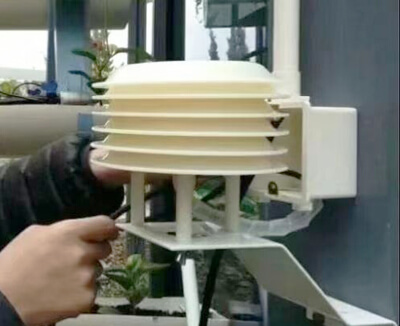
In meteorological station, sensors for measuring temperature and humidity are usually placed in white louvered boxes. The white housing prevents direct sunlight from hitting the sensor. The white waterproof material can reflect the sunlight that is projected on the louver. The air in the box will not rise due to the heating of the outer casing, so the measured temperature is more accurate. In addition, the louver box is surrounded by baffles that are inclined at 45 degrees, which can not only ensure normal air circulation, but also prevent insects from entering. Reduce the interference of air flow on temperature measurement. With the development of technology, small and portable solar radiation shields are usually used in meteorological sensors to place temperature and humidity sensors. Compared with the traditional louver box structure, its volume is smaller. Installation is simpler.
Solar radiation is the most important external energy source, and its small changes can also lead to huge changes in the global environment and weather. Solar radiation is one of the important causes of the earth’s weather and climate change, and climate change and weather forecasting require information on solar radiation. Meteorological solar radiation has a wide range of wavelengths. The total solar radiation is usually measured, which is the sum of the direct radiation and scattered radiation of the sun. After the attenuation of atmospheric scattering and absorption, the direct solar radiation that reaches the surface is called direct solar radiation. When passing through the atmosphere, it is scattered by gases, dusts and aerosols in the atmosphere and reaches the surface from all angles of the sky, which is called solar scattered radiation.
Solar radiation sensor is one of the important meteorological sensors. It can measure the total solar radiation in the spectral range of 0.3~3μm. The internal use of high-precision photosensitive elements, high absorption in the full spectral range, good stability. A dust cover with a light transmittance of up to 95% is installed above the sensing element, with high transparency and accurate measurement. The dust cover adopts special treatment, which is waterproof and dustproof, and effectively prevents the interference of environmental factors on the internal components. It can also work stably in harsh weather conditions.
4. Rain Gauge
Rainfall is one of the common meteorological states. Monitoring rainfall is an important basis for the calculation of regional water resources and the basis for meteorological research. Changes in precipitation have a direct impact on the runoff of surface rivers, which can provide data analysis for the prediction and prevention of flood disasters. In addition, precipitation affects the growth and development of crops and can promote agricultural production. Therefore, rain gauges are often installed on weather stations to monitor rainfall.
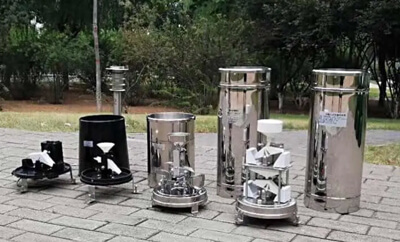
Rain gauges commonly used in meteorological testing are made of ABS and stainless steel. The difference between the two is that the ABS rain gauge is light in weight and easy to install. Cheaper than stainless steel rain gauges. But stainless steel rain gauges are more accurate. Stainless steel material resists corrosion and can be used for a long time in harsh environments. The most widely used meteorological sensors are stainless steel rain gauges.
There are meteorological sensors that can measure rainfall and also instruments that can measure evaporation. Evaporation is an integral part of the surface heat balance and water balance, and is also directly affected by climate change in the water cycle. Evaporation is a factor of heat energy exchange. Therefore, evapotranspiration has important application value in estimating terrestrial evaporation, crop water demand and crop water balance. Measuring the change of evaporation is of great significance for in-depth understanding of climate change and discussion of water cycle.
In meteorological monitoring, evaporation sensors are often used to observe water surface evaporation. The shell is designed with double-layer stainless steel, which can prevent evaporation errors caused by direct sunlight. The measurement accuracy is relatively accurate, and the stainless steel material is corrosion-resistant, which can prolong the service life of the sensor. It can be used with rain gauges for automatic measurement and remote transmission of evaporation and rainfall processes.
Atmospheric visibility is an indicator that reflects the transparency of the atmosphere. It generally refers to the maximum horizontal distance that a person with normal vision can see the target clearly under the weather conditions at that time. It is a meteorological element that has an important impact on aviation, navigation, land transportation and military activities. Atmospheric visibility is closely related to the prevailing weather conditions. When there are weather processes such as rain, fog, haze, and sandstorms, atmospheric visibility is poor.
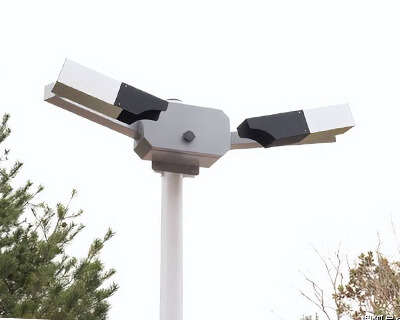
Visibility sensors are often installed on roads and ports to monitor atmospheric transparency. The visibility sensor is composed of main components such as light transmitter, light receiver and microprocessor controller. It emits infrared LED light through the transmitting end and passes through the sampling area to the receiving end on the other side. The visible distance is determined by measuring the intensity of scattered light caused by gas molecules, aerosol particles, and fog droplets in the air in the sampling area. A 35° forward scattering angle was used to confirm an ultra-wide range of particle sizes. It can be widely used in transportation departments such as meteorological stations, airports, highways, and shipping.
7. Illumination sensor
The difference between illumination and solar radiation is that total solar radiation measures light that is invisible to the human eye. Light refers to visible light.
Light is also an important factor for meteorological monitoring. There are two types of illumination, natural illumination and artificial illumination, and the measurement on outdoor weather stations is usually natural illumination. The energy carried by light can affect the temperature change in the air. At the same time, light is also one of the necessary conditions for plant survival.
The illumination sensor is also one of the important weather sensors. It is similar in appearance to a photoelectric solar radiation sensor and consists of a stainless steel housing. There is an induction element on the top, with a transparent protective case. Not only can quickly sense care, but also avoid dust accumulation. Guaranteed measurement accuracy. When used outdoors, the common light measurement range is 0~65535lux or 0~200000lux.
8. Barometric pressure sensor
Air pressure is closely related to weather. Areas with high pressure on the ground are often sunny, and areas with low pressure on the ground are often cloudy and rainy. The high pressure and low pressure mentioned here are relative, not the absolute value of atmospheric pressure. If the air pressure in an area is low, the surrounding air flows into the area horizontally, causing the air in the area to rise. The rising air expands due to the reduced pressure, the temperature decreases, and the water vapor in the air condenses. Therefore, the low pressure center area is often cloudy and rainy. Because air pressure is closely related to the weather, the meteorological station observes the local atmospheric pressure at a uniformly prescribed time every day as one of the basis for weather forecasts.
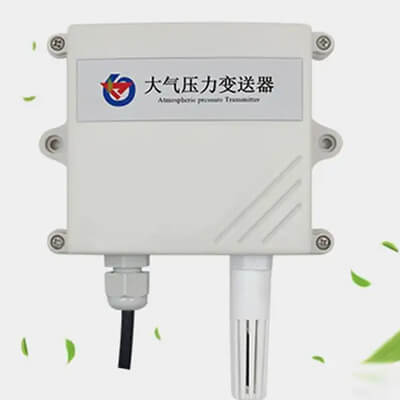
Barometric pressure sensors have been widely used in meteorological monitoring. It consists of a measuring element and a microprocessor. The measuring element makes the measured pressure act on a certain area and converts it into displacement, and then the displacement sensitive element converts it into an electrical signal that has a certain relationship with the pressure. The atmospheric pressure sensor on the weather station can measure the air pressure from 0 to 120Kpa and monitor the real-time changes in the air pressure in the environment.
The atmospheric pressure sensor is primarily used to measure the barometric pressure of the surrounding environment. Areas with high pressure centers are not conducive to the formation of clouds and rain, and are usually sunny. If the air pressure in an area is low, air from the surrounding area flows horizontally into the area. As a result, the air in that area rises. The rising air expands due to the reduced pressure it receives, the temperature decreases, and the water vapor in the air condenses. Therefore, the area at the center of the low pressure is often cloudy and rainy.
Three commonly used meteorological stations
A meteorological station is an instrument that can measure a variety of weather factors. It consists of multiple meteorological sensors, power supply systems, data collectors, and cloud platforms. It is a complete system integrating measurement, transmission, recording and analysis. Meteorological sensors include wind speed sensors, wind direction sensors, rain and snow sensors, solar radiation sensors, rain gauges, solar radiation shields (measuring temperature, humidity, illuminance, atmospheric pressure), ultraviolet sensors, soil sensors, etc.
Meteorological stations measure different factors, and there are many types. According to the different needs of different users, we will introduce the following three commonly used meteorological stations: fixed meteorological station, portable meteorological station, and ultrasonic meteorological station. They can all be used with poles for outdoor fixing, or with a complete solar power supply system to solve the problem of equipment power supply.
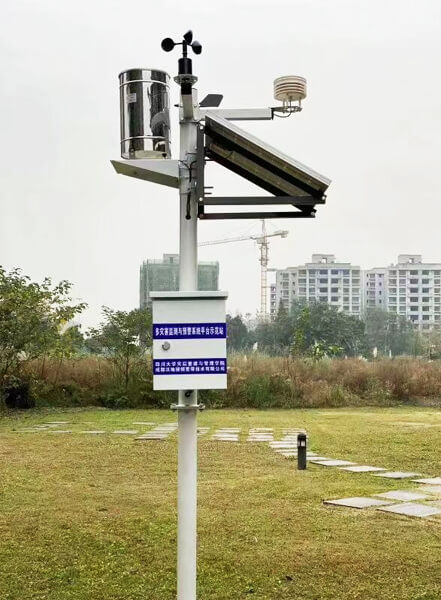
Can measure wind speed, wind direction, temperature, humidity, noise, carbon dioxide, atmospheric pressure, illuminance, rain and snow, ultraviolet rays, total solar radiation, soil temperature, soil moisture, soil EC, soil NPK, soil PH, carbon monoxide, ozone, nitrogen dioxide , sulfur dioxide, hydrogen sulfide, oxygen, PM2.5, PM10, negative oxygen ions, ammonia, TVOC, rainfall
Fixed meteorological stations can be pole mounted or tripod mounted, both of which have good load-bearing capacity. This weather station is recommended for outdoor use because it can measure wind speed & direction, temperature, humidity, noise, co2, atmospheric pressure, illuminance, rain & snow, UV, total solar radiation, soil temperature, soil moisture & EC&NPK&PH, CO, O3, NO2, SO2e, H2Se, O2, PM2.5, PM10, negative oxygen ions, NH3, TVOC, rainfall and more than 30 factors. With a complete solar power supply system, long-term remote monitoring can be carried out.
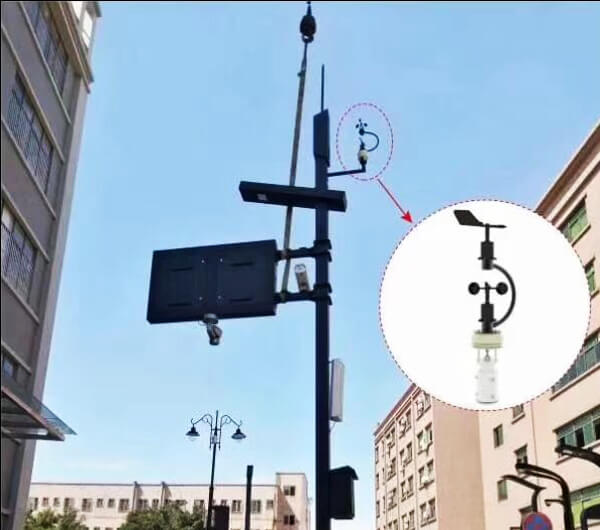
Can measure wind speed, wind direction, atmospheric pressure, noise, temperature, humidity, PM2.5, PM10 (or carbon dioxide)
This portable meteorological station features a stainless steel C-type construction that is resistant to high winds, rain and snow. It can be fixed on poles or eaves for easy installation and removal. It can measure wind speed, wind direction, atmospheric pressure, noise, temperature, humidity, PM2.5, PM10 and other eight factors. If installed on a pole, it can also be used with rain gauges and a complete solar power system.
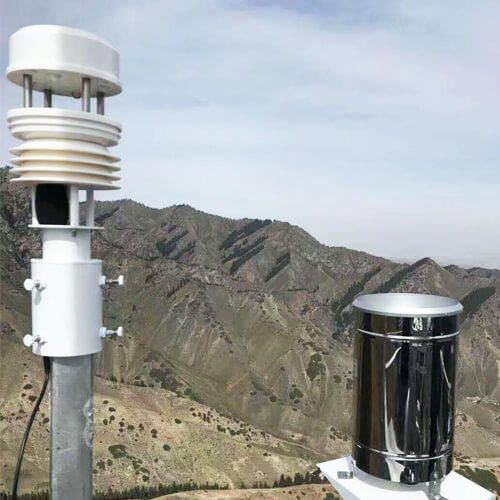
Can measure wind speed, wind direction, rainfall, atmospheric pressure, temperature, humidity, noise, PM2.5 & PM10 (or change to carbon dioxide)
An ultrasonic meteorological station is an integrated weather monitoring equipment. It has no extra accessories and the overall structure is stable. Using ultrasonic technology to measure wind speed and direction, the errors that may occur in traditional mechanical structures are avoided. The installation method is also relatively simple, and can be fixed on the pole or the bow. It can measure wind speed, wind direction, rainfall, atmospheric pressure, temperature, humidity, noise, PM2.5, PM10 and other nine factors. According to different sizes, there are two types of ultrasonic weather stations and small ultrasonic weather stations.

